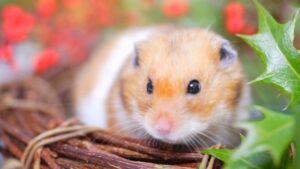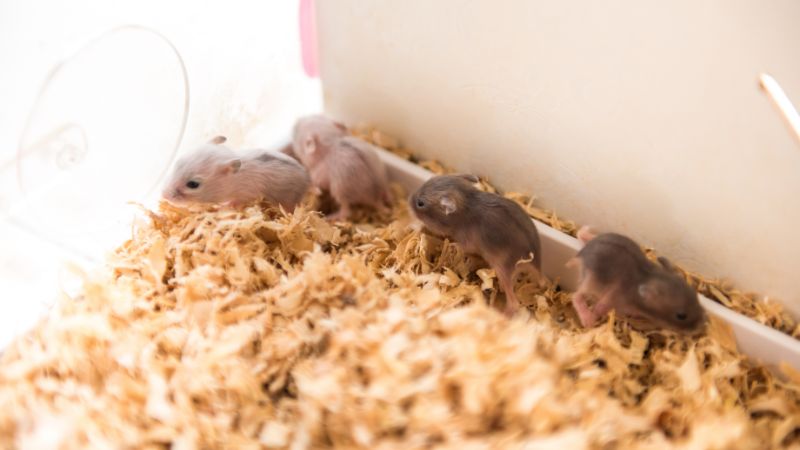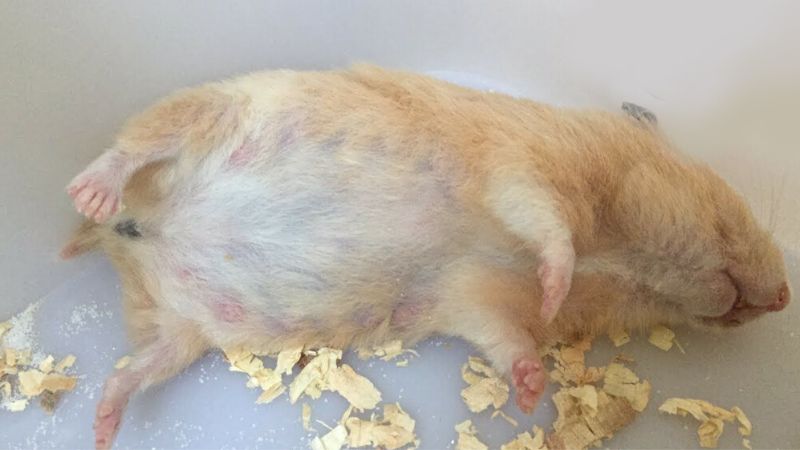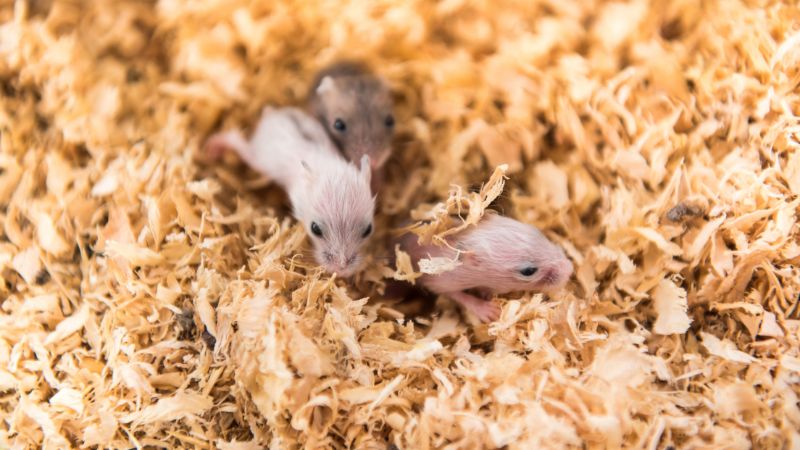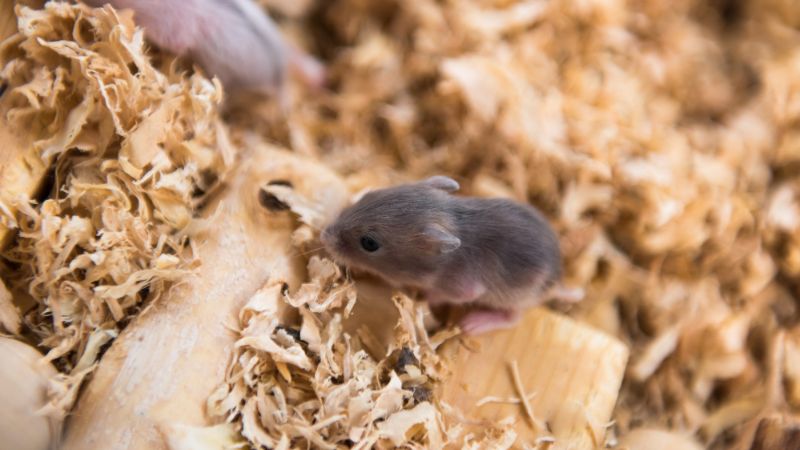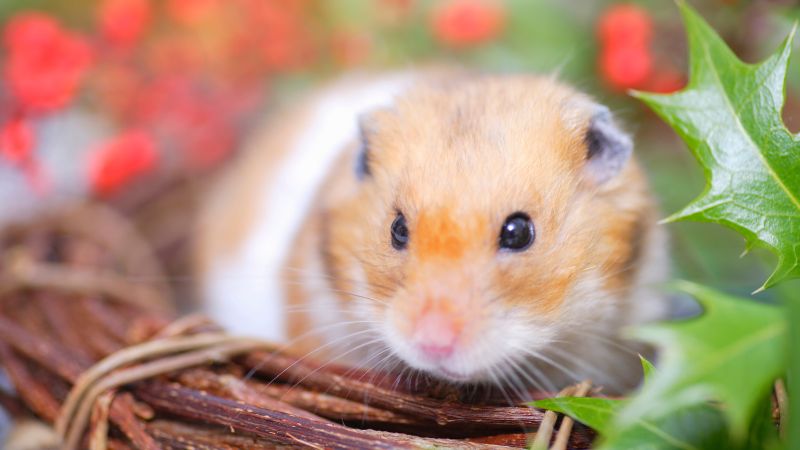Raising baby hamsters is a delightful experience, but it requires a special touch and understanding of their needs. This beginner’s guide offers a comprehensive look into ensuring the well-being of these tiny creatures from birth and beyond.
How do I know if my hamster has babies?
Being a pet owner comes with its surprises. One day you might find your hamster looking a bit plumper, acting differently, or hiding more. Could she be pregnant?
- Common signs of a pregnant hamster
During the early stages, a
female hamster‘s belly begins to swell. This can be a telltale sign that she’s expecting. Pay close attention, and you might even feel the little ones moving inside!
- Behavior changes during pregnancy
A pregnant hamster may start collecting more bedding, becoming aggressive, or eating more than usual. These behavioral changes are her natural instincts kicking in to prepare for the upcoming birth.
- Physical changes to watch out for
Apart from the swollen belly, nipples become more prominent as they prepare for lactation. A thickening around the midsection is another physical change to note.
Connecting the dots between these signs can give you a pretty good hint that baby hamsters are on the way.
How do you know when a hamster is about to give birth?
Anticipating the birth of baby hamster pups is exciting! But, it’s crucial to know when to expect the new arrivals for proper preparation.
- Understanding the hamster gestation timeline
A typical hamster pregnancy lasts between 16 to 23 days, depending on the breed. Knowing the date of mating can help you pinpoint the expected birth date.
- Signs that birth is imminent
Your hamster might become restless, start nesting aggressively, or even become a bit more secluded. These are signs that she’s almost ready to welcome her babies.
Preparing for hamster birth
Once you suspect your hamster is pregnant, it’s time to prepare.
-
Setting up a comfortable nesting area
Provide ample soft bedding, like shredded paper or hay, inside the
wooden hamster cage so the mother can create a cozy nest. This ensures a safe and warm environment for the pups.
-
Choosing the right bedding
Opt for unscented, dye-free paper-based bedding. Avoid pine or cedar, as these can be harmful to hamsters. Cotton-based materials can also pose a risk, as the fibers might wrap around the baby’s limbs.
-
Ensuring a quiet and stress-free environment
Minimize disturbances around the hamster cage. Loud noises or frequent cage cleanings can stress the mother, potentially harming the babies.
How to take care of baby hamsters during the first 2 weeks?
Taking care of baby hamsters during the first 2 weeks of their life is a delicate process, and their survival largely depends on the mother. However, you can take steps to ensure a safe and healthy environment for them. Here’s a checklist of 10 aspects to help you care for newborn hamsters:
-
Do not disturb:
– For the first week, especially, avoid unnecessary handling or disturbing the nest. The mother might get stressed or scared and may harm or even eat the babies if she feels threatened.
– Minimize noise and sudden movements around the cage.
-
Keep the cage clean:
– Before the birth, clean the cage thoroughly but gently. After birth, avoid cleaning the cage for at least the first week to avoid stressing the mother.
– After the first week, you can remove obviously soiled bedding, but try not to disturb the nest.
-
Nutritious diet for the mother:
– A nursing mother needs a lot of energy. Feed her a high-quality hamster mix, supplemented with protein like boiled egg, plain chicken, and tofu.
– Fresh veggies and fruits can also be given but in moderation. Always remove uneaten fresh food to prevent mold.
– Ensure she has a constant supply of fresh water.
-
Warmth:
– Baby hamsters are born hairless and are very vulnerable to cold. Ensure the room temperature is consistent, around 68-72°F (20-22°C).
– Avoid placing the cage near windows, doors, or AC vents where there could be drafts.
-
Check the babies:
– While you shouldn’t handle the babies during the first week, it’s a good idea to do a visual check to ensure none are straying too far from the nest or appear injured. If you see any dead babies, you should remove them gently with a spoon or similar tool to prevent any health issues in the cage.
-
Separate other adult hamsters:
– Only the mother should be in the cage with the babies. If you have more than one adult in the cage, remove the others before the babies are born.
-
Handling:
– Around the 10-14 day mark, the babies will start to develop fur and open their eyes. This is generally a safer time to start handling them gently and briefly, to get them used to human contact.
– Always wash your hands before handling to reduce the risk of transmitting anything harmful and to remove any unfamiliar scents.
-
Weaning:
– At around 2 weeks, you might observe the babies nibbling on solid food. However, they will continue to nurse their mother for another week or so.
– By 3-4 weeks, they should be fully weaned, and you might consider separating them by gender to avoid unintended breeding.
-
Regular checkups:
– Observe the babies for any signs of illness or distress. If you notice anything unusual, consult a vet who’s experienced with small animals.
-
Safe environment:
– Make sure there aren’t any gaps or openings in the cage where tiny babies could escape. Also, avoid using mesh wheels; instead, use solid-surface wheels to prevent injuries.
Remember, every hamster is an individual, and while these guidelines should work for most, always pay attention to the specific needs and behaviors of your pets. If you’re ever unsure about the health or well-being of your hamsters, consult a veterinarian.
Food and feeding for hamster babies
Providing the right nutrition is pivotal for their growth and health.
-
Suitable foods for baby hamsters
Soft foods like cooked rice, oatmeal, or bread soaked in milk can be introduced around ten days old. Gradually introduce hamster pellets as they age.
-
Creating a feeding schedule
Feed the babies multiple small meals daily. Monitoring their consumption helps ensure they’re getting the nutrients they need.
-
Special considerations for orphaned pups
Orphaned baby hamsters might require hand-feeding using a dropper. In such cases, a puppy milk replacer is a suitable substitute for mother’s milk.
Conclusion
Raising baby hamsters requires meticulous attention, understanding, and patience. From recognizing the subtle cues of an expecting mother to ensuring the safety and nutrition of the newborn pups, each step is crucial in ensuring their well-being. This beginner’s guide serves as a comprehensive roadmap for those eager to provide the best care for these tiny, vulnerable creatures. With the right knowledge and commitment, you can watch these delightful beings grow into healthy, happy adult hamsters, enriching your life with their presence.
FAQs
How soon can I handle baby hamsters after they are born?
It’s best to wait at least two weeks before handling baby hamsters. Disturbing them too early can stress the mother and may result in her abandoning or harming the pups.
When do baby hamsters open their eyes?
Baby hamsters typically open their eyes when they are about 14-16 days old.
How can I tell if the mother is taking good care of her babies?
A caring mother will keep her babies in a nest, groom them, and nurse regularly. If babies are scattered around the cage or are consistently crying, it might be a sign of neglect.
Is it normal for the mother hamster to eat some of her babies?
While it can be distressing for pet owners, it’s not uncommon for mother hamsters to cull their litter, especially if they’re first-time mothers or if they feel threatened.
Should I separate the father hamster from the babies?
Yes, it’s generally a good idea to separate the father as male hamsters can impregnate the female again soon after birth or might harm the babies.
When should I move baby hamsters to their own cage?
Baby hamsters should be separated by gender and moved to their own cages by 4-5 weeks old to prevent inbreeding and territorial disputes.
